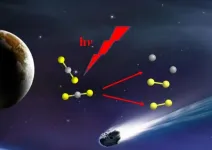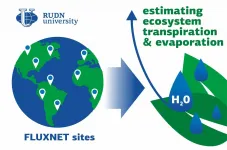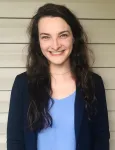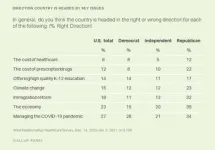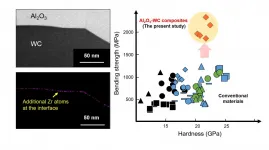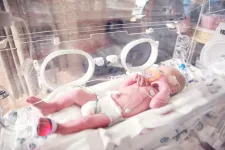Rules of resistance against transgene silencing
2021-01-28
(Press-News.org) Clear rules for engineering transgenes that can be inserted and propagated over multiple generations of nematodes include ways to protect inserted genes from the organism's natural defenses against foreign DNA. Developed by KAUST researchers, the rules have implications for many research fields, including gene therapy development.
Scientists often study biological processes, such as normal and mutant gene functions, in the worm Caenorhabditis elegans because it has many genes and molecular pathways in common with humans. Specific gene functions can be investigated by injecting DNA into the worm's reproductive organs, where it links into what is known as an extra-chromosomal array. This array is eventually incorporated into the nucleus, where it is duplicated and segregated into daughter cells. The injected genetic material is then potentially inherited across generations, which last only two days in C. elegans, allowing researchers to study gene functions over multiple generations in a short time period.
But C. elegans, like other multi-cellular organisms, has silencing mechanisms for recognizing and shutting down foreign DNA, which can hinder research efforts.
Scientists recently discovered that a class of noncoding DNA, called periodic A/T clusters (PATCs), can watermark their own genetic sequences to protect them from the natural silencing mechanisms of cells.
Bioengineer Christian Frøkjær-Jensen conducted investigations with students and researchers in his lab to develop rules for using PATCs, some gene regulators and reagents for persistent expression of transgenes in the C. elegans germline from simple extra-chromosomal arrays.
The protocol helps optimize transgenes and describes where PATCs should be inserted and the temperatures most suitable for propagating transgene strains, among other rules.
"Think of electrical circuits," says Frøkjær-Jensen. "Any electrical engineer can buy resistors and capacitors and be certain that these parts will behave in predictable ways when put together into a circuit. Our work aims to develop similar standards for genetic engineering in multicellular organisms. We also aim to freely distribute the necessary reagents for this process to the rest of the academic scientific community; we hope this will put KAUST on the map for biological engineering and synthetic biology."
Their investigations also led to the development of a web-based application for researchers to analyze their own DNA sequences for PATC watermarks. "PATCs can span large distances and rely on patterns that are not easily identifiable," explains Frøkjær-Jensen. "Previously, researchers needed to install specialized software to do this. Now, scientists can simply copy-paste their sequence files into our application to get an immediate analysis and graphical output." This will help scientists more easily use PATCs in their research and study their roles.
INFORMATION:
KAUST's web application for computing PATC scores in DNA sequences can be found at http://www.wormbuilder.org/PATC.
[Attachments] See images for this press release:

ELSE PRESS RELEASES FROM THIS DATE:
2021-01-28
A team led by Prof. SU Bing from the Kunming Institute of Zoology (KIZ) of the Chinese Academy of Sciences (CAS), Prof. LI Cheng from Peking University, and Prof. ZHANG Shihua from the Academy of Mathematics and Systems Science of CAS has reported the highest resolution by far of the 3D genome of the primate brain, and demonstrated the molecular regulatory mechanisms of human brain evolution through cross-species multi-omics analysis and experimental validation. The study was published in Cell.
The unique pattern of human brain development stems from accumulated genetic changes during human evolution. Among the huge number of diverging genetic changes, only a small portion of the between-species ...
2021-01-28
Studying the creation and evolution of sulfur-containing compounds in outer space is essential for understanding interstellar chemistry. CS2 is believed to be the most important molecule in comet nuclei, interstellar dust, or ice cores. CS and S2 are the photodissociation fragments of CS2.
Forty years ago, the emission spectra of only CS and S2 species, and not those of CS2 species, were observed from several comets by the International Ultraviolet Explorer satellite. The photodissociation mechanism of CS2 molecules remains unclear, and S2 fragments have not been experimentally observed before.
Recently, a team led by Prof. YUAN Kaijun from the Dalian Institute of Chemical Physics (DICP) of the Chinese Academy of Sciences (CAS), in cooperation with Prof. WANG Xing'an's group ...
2021-01-28
An ecologist from RUDN University together with colleagues from 14 countries compared three methods for estimating ecosystem transpiration in a study. In the first ever research with such a comprehensive data-set, the team used land-atmosphere water vapor flux data of collected at 251 locations all over the planet, from Australia to Greenland. The outcome of the research help to understand the role of plants in the global water and carbon cycles in the current predicament of global warming. The results of the study were published in the December 2020 issue of the journal Global ...
2021-01-28
Western Carolina University researchers find a disproportionate number of inmates with violent offenses suffer from post-traumatic stress disorder, panic disorder and alcohol use disorder, and published their findings in the Journal of Criminal Psychology.
Alexa Barrett, clinical psychology master's student at WCU, and Al Kopak, associate professor of criminology and criminal justice at WCU, discovered the combination of PTSD, PD and AUD significantly increased the likelihood of violent offenses while conducting research at three county detention centers in North Carolina.
Supported by a Summer Research Assistantship provided by the Graduate School, the purpose of this study was to detail ...
2021-01-28
A PhD student and 'beer scientist' has inadvertently discovered a way to conduct extremely small-scale brewing experiments, potentially leading to better beer.
It came about when University of Queensland PhD candidate Edward Kerr hit a hurdle when he completed a beer brewing experiment for a paper.
"I was looking at barley protein changes during the mashing stage of beer brewing, when one of the paper's reviewers asked if the changes were caused by temperature or time spent mashing the barley," Mr Kerr said.
"It was a good question, but to find out I'd need to brew all over again, with an instrument that would hold at least 23 litres ...
2021-01-28
WASHINGTON, D.C. and SAN DIEGO, CA -- In his inaugural address, President Joe Biden vowed that "help is on the way" to a nation grappling with a pandemic that has already claimed over 420,000 lives and counting. However, despite the promise of a better future, a new survey from West Health and Gallup finds Americans remain largely skeptical that issues as varied as managing the COVID-19 crisis, lowering healthcare costs, improving the economy, fixing immigration and addressing climate change, will improve anytime soon.
The findings from the monthly West Health-Gallup U.S. Healthcare Study are based on a ...
2021-01-28
Pioneering research into how our bodies manufacture the cells that make blood has moved us closer to regrowing tissues and organs. The findings also may let doctors grow the cells for transplantation into people to battle cancer, blood disorders and autoimmune diseases.
Researcher Karen K. Hirschi, PhD, of the Department of Cell Biology and the Robert M. Berne Cardiovascular Research Center at the University of Virginia School of Medicine, has developed a simple and efficient way to generate "hemogenic endothelial cells." These cells are the first step in the production line of blood cells, and Hirschi's new findings provide a blueprint for creating them outside the body.
"By studying how hemogenic endothelial cells develop normally, we gain insights needed ...
2021-01-28
Ceramic matrix composites (CMCs) are incredibly strong materials used in jet engines, gas turbines, and cutting tools for nickel superalloys. Aluminum oxide (Al2O3) is hard and chemically inert, and tungsten carbide (WC) is used as a superhard material, but past efforts to create an Al2O3-WC CMC yielded unsatisfactory results. Recently, a study by Japanese scientists, published in Scientific Reports, shows that adding zirconium atoms results in improved Al2O3-WC CMCs.
Given the potential utility of Al2O3-WC CMCs as superhard materials, researchers around the world have tested several formulations to identify one with a high bending strength, which is a measure of the physical stress a material can be subjected to before it becomes permanently bent or broken. Previously, ...
2021-01-28
In a first-of-its-kind study, researchers discovered that light pollution leads to more than just wasted energy and washed-out starlight--it can increase the likelihood of a preterm birth by almost 13%. Laura Argys, professor of economics at the University of Colorado Denver, collaborated with scientists at Lehigh University and Lafayette College to produce this study.
Skyglow, the brightness of the night sky apart from discrete light sources such as the moon and visible stars, is one of the most pervasive forms of light pollution. When you have increased artificial brightness at night, coming from sources like streetlamps, outdoor advertising, and buildings, it reduces your ability to see the dark ...
2021-01-28
Aging and lifestyle-related metabolic imbalances, such as hyperglycemia, hyperlipidemia, and oxidative-stress, cause the accumulation of advanced glycation end products (AGEs), including pentosidine (PEN, crosslinked type) and carboxymethyl-lysine (CML, non-crosslinked type). Osteoporosis is a widespread metabolic skeletal disease characterized by diminished bone mineral density (BMD) or bone strength, which increases the risk of fractures.
To date, the association of PEN and CML with osteoporotic fracture has been reported, and the accumulation of AGEs in bone ...
LAST 30 PRESS RELEASES:
[Press-News.org] Rules of resistance against transgene silencing


